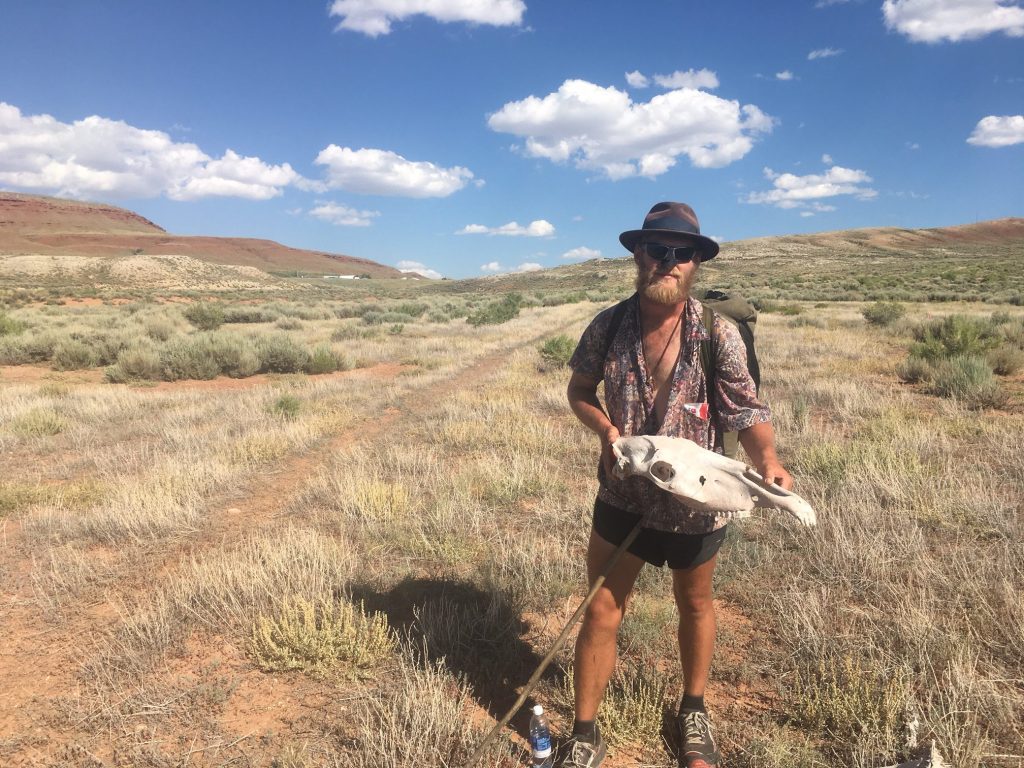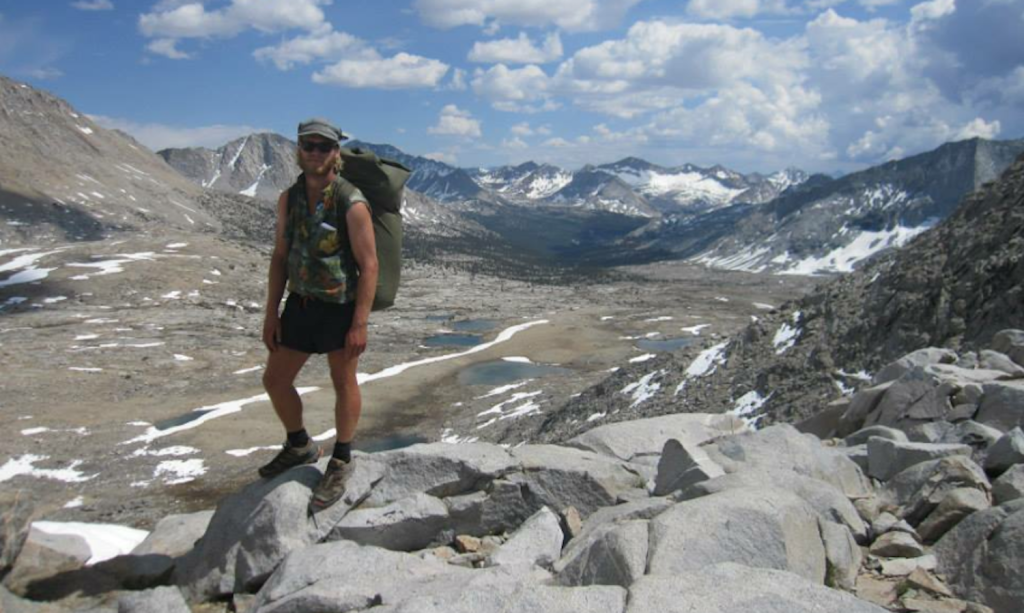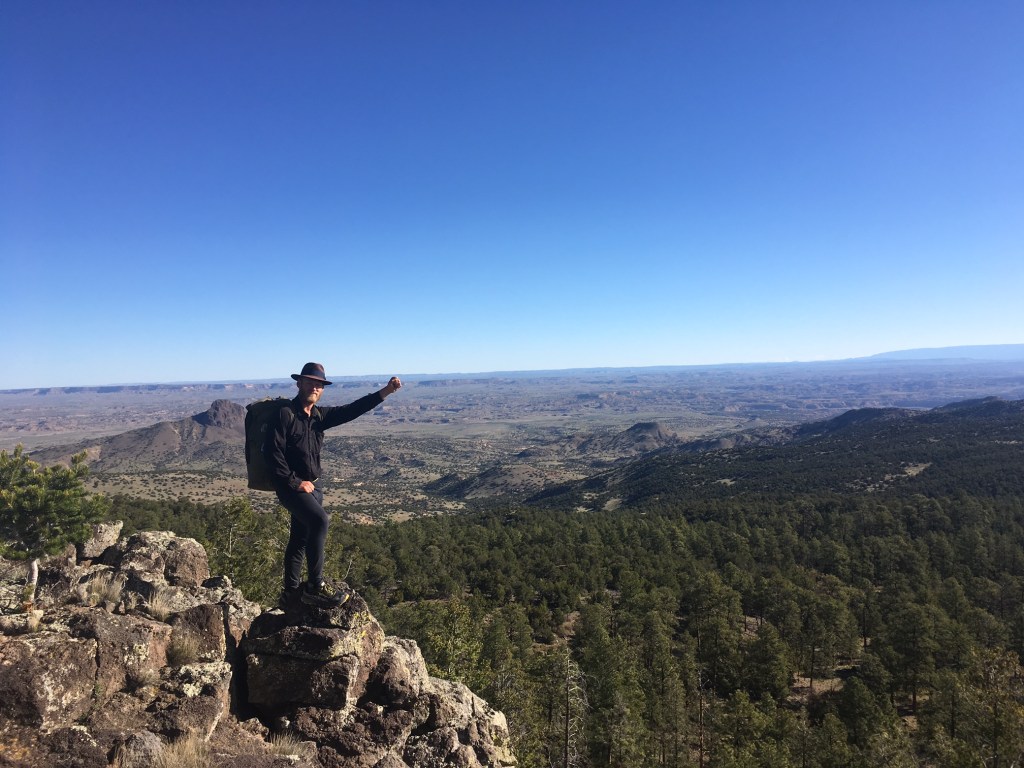A Q&A with the man who’s completing the 3,100-mile trail to help get more young people outside
On April 28, Michael Hervey began his quest to complete the Continental Divide Trail (CDT) in a single season. As of July, he was done marching through the last of the 14ers in Colorado and well into Wyoming.
The trip will take him from the badlands of New Mexico to the Canadian border, covering 3,100 miles on the highest and most remote of the National Scenic Trails. He won’t be alone. In the spring, about 200 hikers set out from the desert in an attempt to reach the Canadian border before winter arrives. And if he succeeds, he’ll join a hardy group of several dozen hikers to complete one of the most challenging long-distance trails in the United States this year.
One thing sets Hervey apart: He’s undertaking this trek to support the nonprofit organization Outdoor Outreach, a San Diego-based group that helps underserved and at-risk youth reach their full potential through outdoor leadership and mentoring programs, ranging from after-school climbing sessions to camping trips to surf lessons. Thus far, he’s raised over $20,000 in donations.
I caught up with Hervey before he hit the trails to learn more about his plans.

Hervey in Atlantic City, Wyoming | Photo courtesy of Michael Hervey
What will be your biggest challenge?
Other than the heat and the lack of water, the first four days of a trip of this duration are always brutal. You go through this transition phase of carrying a pack. Even the first two weeks are an adjustment: Your body is still trying to get used to the daily routine of hiking 20 to 30 miles per day.
How do you train to hike 3,100 miles?
To get in shape for the CDT, I did some hiking and ultrarunning. But I tried to get used to carrying a little bit of weight because that’s the main difference between running long distances and doing this on a daily basis.
Are the perils of embarking on a journey like this part of the fun?
I think more than the element of danger, there’s the mystery of the trail. I plan to stay on the CDT most of the time. I’m comfortable in the woods and that’s where I want to be. And if you think about it, the trail is the flattest and safest way over the mountains. I plan to take as few risks as possible and come home in one piece.
The mountains don’t scare me. I did the Pacific Crest Trail (PCT) three years ago. Over time, the trail became my home. I felt as though I was exposing myself to more risk each time that I entered a town than when I was on the trail alone or with a small group of hikers.
And yet there’s a weird paradox because thru-hikers are not able to do this kind of hiking without help from the towns. Whether it’s the resupply of food or hitching a ride, I wouldn’t be able to do this trip completely alone.
How much does your pack weigh?
Without food and water, it’s about 10 pounds. I’m packed for hiking, not camping.
When I was on the PCT, I had no gear. I didn’t carry a tent, and I ate a lot of tortillas and peanut butter [because I didn’t carry a stove].
This trail will be pretty cushy for me. I’ve got a tent and a puffy pullover. Since on the last trail I really had no gear, I’ve decided to run an experiment to see if carrying a tent and stove changes the nature of the trail experience or not. We’ll see. On the PCT, I noticed that people were still boiling water while I was done eating and getting ready for bed. And that’s the key: You want to be fast, light and just keep moving forward.

Hervey on the PCT | Photo courtesy of Michael Hervey
How many days will you be on the trail on average before resupplying?
I’ve got a printout of all the distances to resupply towns. The way you hike 3,100 miles is in 4-day sections. I’m looking at the map to determine how much food to buy for the next section. The biggest risk is if you get into terrain or weather that so significantly slows you down that you run out of food, but that doesn’t happen very often and can be planned for.
On a trip of this length, solitude is another factor. What is the longest time that you’ve been alone on the trail?
Completely alone, about three days, so not that long, really. On the PCT, though, there’s a whole community of hikers out there. You could be as alone as you want to be or find companionship. You kind of knew who was around you, and you met thru-hikers throughout the day. If I soloed the CDT—away from my friends and family—I would be alone far more than I want to be. I plan on hiking with a trail partner. We met on the PCT and his name is Nick Zeitler. His trail name is Moses.
Is it topographic maps or GPS for route finding?
Map and compass. I’m a no-technology, old-school kind of guy. Though, I am taking my smartphone. It’s really important for me to stay in contact with my friends and family members and to post on social media. The phone will be turned off for the majority of the time; I’ll be using the phone mainly to take photos.
Thru-hikers acquire trail names—what’s yours?
Smooth Operator, I go by Operator. I got it from a squeeze package of peanut butter that I had in my sack of food. It came as part of a Meal, Ready-to-Eat (MRE)—which didn’t have any information or nutritional guidelines other than Smooth Operator on the label. The name stuck.

Hervey on the CDT | Photo courtesy of Michael Hervey
How did you get involved with inclusion and parks issues?
While planning for this trip, I was looking for ways to give back. My dad told me about Outdoor Outreach, so I gave them a call. Last fall, I went to Joshua Tree National Park with them. We took kids from El Cajon (in San Diego) on an overnight trip to the desert. Most of them had never camped before. We built a fire, roasted marshmallows, sang songs and did magic tricks. It was a blast. Since then, I’ve tried to go on one or two field trips with them a month.
What’s going to sustain you more on the trail: a good book or a good meal?
Honestly, a good meal. And perhaps more important than a good meal is proper hydration. I plan to consume three liters of water per day, and I’ve become comfortable carrying two liters of that in my belly. So many people are interested in what I’m going to read. But I have nothing planned to read. I have journals to write. We tend to hike 10 to 14 hours a day. I plan to lie down and go to bed.
What ritual will you miss the most from home?
Probably my tea set—I drink tea most mornings—and my music. I enjoy playing my guitar on a regular basis. However, it’s mostly people who I’ll miss the most. Six months is a long time to be away from my friends and family.
